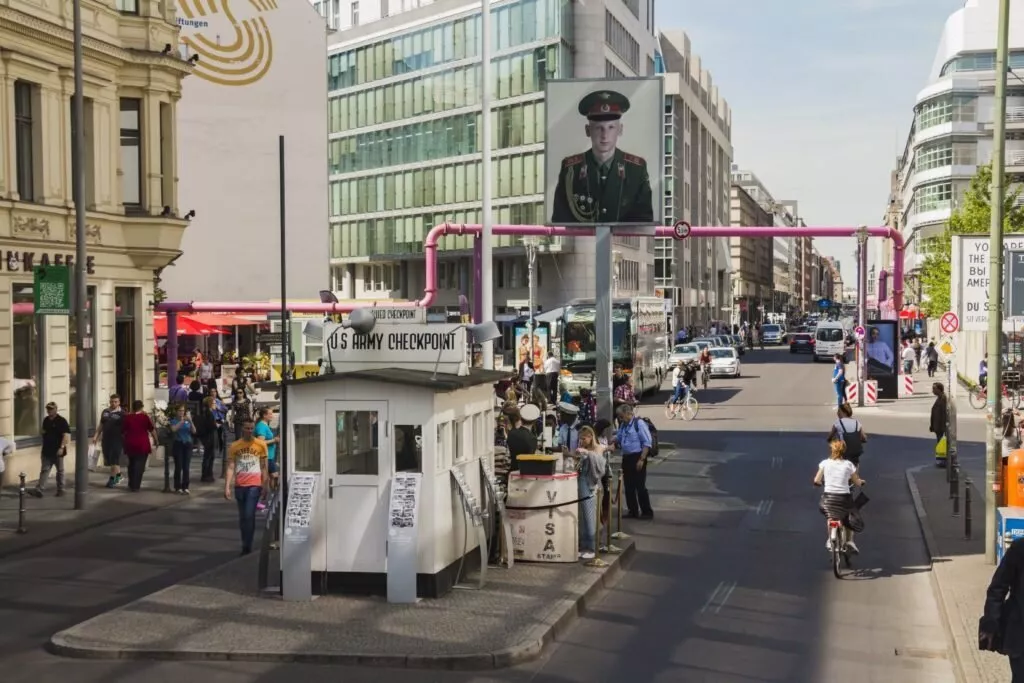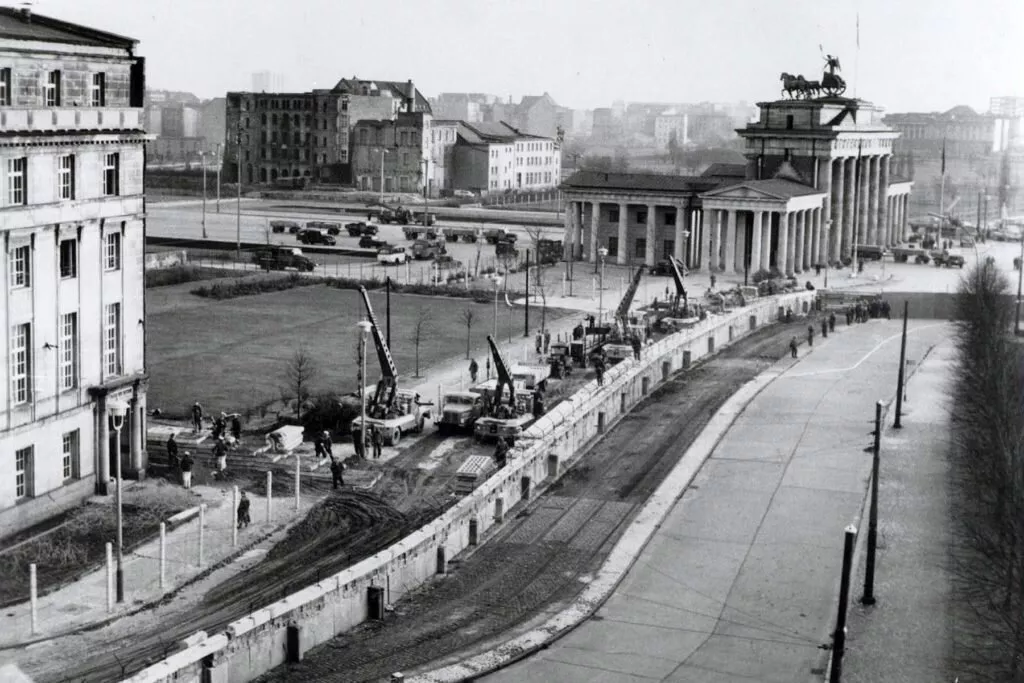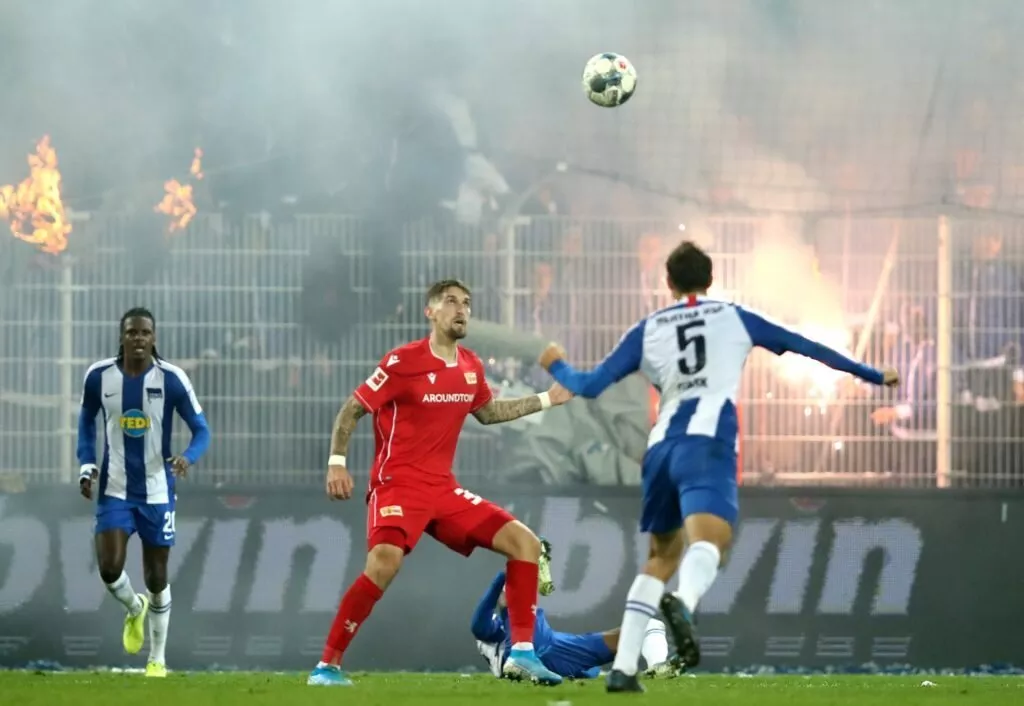What makes the Berlin derby such a special fixture in Bundesliga?

(Courtesy : Bundesliga )
Hertha and Union Berlin together make one of the most awaited derbies in Germany.
Hertha Berlin and Union Berlin meet again on Matchday 12, when the eyes of the world will fall on the German capital for a fixture that brings together football, politics and history in a once divided city.
Union won the first top-flight meeting of the sides in November of 2019/20, when substitute Sebastian Polter got the only goal from the penalty spot late on, while Hertha romped to a 4-0 victory in the return on Matchday 27.
The Old Lady got the better of things in the first encounter of last season, winning 3-1 at home. The return at the Stadion an der Alten Försterei ended 1-1.
Those games were not the first Berlin derbies in the Bundesliga, though. Union's first-ever promotion made them the fifth team from the capital to play in the top flight, following in the footsteps of Tasmania 1900 Berlin, Blau-Weiß Berlin, Tennis Borussia Berlin and, of course, Hertha.
Yet despite producing more Bundesliga clubs than any other city, only eight matches have ever been played between capital clubs in the top flight before this latest meeting. Interestingly, only the most recent has ended in points being shared.
Out of 59 Bundesliga seasons to date, Hertha have featured in by far the most (39), while Tasmania and Blau-Weiß managed just one apiece in 1965/66 and 1986/87 respectively. However, Hertha were not present in the league at the time. Prior to Union, Tennis Borussia were the only other Berlin club besides Hertha to spend more than one campaign at the top level, and did in fact play alongside the Old Lady in both 1974/75 and 1976/77.
But not until 2020/21 did another Berlin club finish above Hertha in the Bundesliga table. The Old Lady had finished ahead of Union only on goal difference in their first year together, but Die Eisernen made history the following campaign. The gap in the end was 15 points as Union finished seventh and qualified for Europe for only the second time. Hertha were languishing in 14th and only just avoided the drop.
The first capital derby took place on 16 November 1974 when Hertha won 3-0 'away' at Tennis Borussia in the Olympiastadion. The Old Lady would then win the next two at home in 1975 (2-1) and 1976 (2-0) before losing the return game 2-0 in 1977.
While these were indisputably Berlin derbies and fierce local rivalries, they were also West Berlin derbies. That is the crucial difference between the matches involving Union, as Die Eisernen are the first team ever from what was East Berlin to make it to the Bundesliga.

To truly appreciate the magnitude of this derby, you need to understand the modern history of Berlin as a city.
Following the end of World War II, Germany and its capital were divided amongst the Allied powers. The occupation zones under the control of the United States, United Kingdom and France would form West Germany, while the area under the control of the Soviet Union became East Germany. As the capital, Berlin itself was similarly divided.
The Berlin area lay entirely within East German territory, and in 1948 the Soviets imposed a blockade on the west of the city and it was cut off by land. Only the Berlin Airlift by the western powers kept their part of Berlin supplied with food and all other essential items.
As the Cold War escalated, the East German government began the construction of the Berlin Wall to encircle West Berlin in 1961. While Westerners were permitted to pass into East German territory via strictly controlled checkpoints, Easterners were banned from entering the West without prior consent.
Berlin as a city was divided. What began as a political division would manifest into a social and economic one as life in the two Berlins began to diverge.
On the sporting front, East Berlin teams competed in the East German league system. Clubs such as Vorwärts Berlin and BFC Dynamo dominated the footballing landscape behind the Iron Curtain. Union Berlin was founded in 1966 from SC Union Oberschöneweide, and enjoyed their greatest success in 1968 when they won the East German Cup.

After months of social unrest in Berlin, the Berlin Wall was torn down on 9 November 1989 and access between the two sides of the city was allowed for the first time in almost three decades.
Up until this point there had been a general friendship between Hertha and Union fans. With Westerners allowed to pass through to East Berlin, Hertha supporters used to go and watch matches at the Alte Försterei, which became a place for dissent against the East German state. In return, Union fans would accompany the Old Lady on their European matches in eastern Europe, including a UEFA Cup quarter-final in Prague in 1979, where half the 30,000 in attendance had travelled from both sides of Berlin.
This solidarity continued as the Wall fell, with Berliners seeing themselves as supporters of the entire city. Therefore, when Hertha hosted Wattenscheid in Bundesliga 2 just two days after the fall of the wall, 44,000 packed into the Olympiastadion to witness a 1-1 draw between the two promotion candidates that would usually only attract 10,000 spectators. Among the crowd that day were several thousand East Berliners who had received free tickets.
Just a few months later, on 27 January 1990, came the first match between Hertha and Union in 28 years. An official attendance of 51,270 was recorded at the Olympiastadion, although the actual total is believed to be higher. It turned into a celebration of Berlin.
"Spectators were basically holding each other in their arms and celebrating," recalls former Hertha forward Sven Kretschmer, who played in the 2-1 loss before the two sides went out for dinner together.
Union fan Chris Lopatta said of the one-off match: "It was great. We met a lot of nice Hertha fans there and remained friends for a long time."
Hertha supporter and broadcaster Manfred Sangel described it as "a huge emotional highlight". However, he also added, "but that quite quickly fizzled out."
That was partly because the job of bringing the east and west of the city onto a level social and economic playing field had begun. There were also large sporting differences between Hertha and Union. While the former gained promotion back to the Bundesliga that season, Die Eisernen missed out on promotion to the top tier in East Germany.
When the two league systems were combined following formal reunification, Union found themselves in the third tier and pushing for promotion. However, the club's finances remained a serious concern.
Despite selling various players to remain afloat, the team finally managed to reach Bundesliga 2 in 2001, the same year they finished runners-up in the DFB Cup and became the first third-tier team in German history to earn a place in the UEFA Cup.
The following decade was a rollercoaster, though. Three seasons at the second level were followed by back-to-back relegations. The coffers were empty again and Union were required to have €1.46 million in the bank to be allowed to play in the fourth tier.
Since people in Germany are paid to be blood donors, fans started the campaign "Bleed for Union", whereby supporters donated blood and then gave the money to the club. By 2009 the team had worked its way back up to Bundesliga 2, where they would spend the next 10 years. It was there that the sporting rivalry with Hertha finally emerged.
The first all-Berlin derby in Bundesliga 2 took place at the Stadion an der Alten Försterei, ending in a 1-1 draw. Hertha won the reverse fixture 2-1 at home, on their way to topping the league.
The Old Lady would be back two years later, though, following another relegation. This time they lost 2-1 on their short trip east before a 2-2 tie at the Olympiastadion, meaning the competitive record between the two clubs was evenly balanced.

According to former Hertha head coach Ante Covic, the club is "a club for the whole of Berlin, which you can see in the fact that we train in all 12 districts of Berlin". That is in contrast to Union's fan base in the neighbourhood of Köpenick, which has traditionally been made up of working-class supporters. While social differences may have played a part in the relationship becoming frosty, it has rarely been anything more than that.
"I can only remember a friendly relationship between Hertha and Union and that we played friendlies against one another," Covic added ahead of the first meeting of the sides in 2019/20. "The rivalry that we have today has grown over several years due to various reasons.
"I think the city is big enough that we can make use of the remaining 12 districts. We should only measure ourselves against Union on the pitch."
Fans see the rivalry as a concept hyped up by the media and believe it is more bickering than hate, as in other derbies. A fan survey found that disparaging chants came more as a result of peer pressure, and this has seen an unnecessary conflict grow. In reality, for most it has nothing to do with the East-West divide, but has simply developed as any local rivalry might.
Union's first-ever promotion to the Bundesliga also came at a timely moment for many. Their debut top-flight campaign in 2019/20 coincided with the 30th anniversary of the fall of the Berlin Wall, and there had been calls for the league's first all-Berlin derby to take place on that day.
When the fixture list is being compiled, clubs are allowed to express a desire to play an opponent at a certain time. Hertha declared that they had asked for the derby to be played on Saturday 9 November, the anniversary of the fall of the wall, because "it would be a fantastic day for the Berlin derby".
Union president Dirk Zingler, however, saw things differently: "For me it's a derby, it stands for rivalry, demarcation and footballing class warfare. I think it's absurd to give this match a friendly character under the mantra of playing for German unity."
Those two contrasting statements demonstrate both the significance of this derby to Berlin - and also to a lesser extent a unified Germany - and also the differing opinions on the subject. Both clubs want to celebrate the city’s hard-fought unity and the progress that has been made over three decades, yet they now see this derby as a true rivalry.
There are underlying historical and political facets that make this fixture so special beyond a simple local derby. It can best be defined, however, as a friendship founded on solidarity that has developed into a rivalry worthy of the nation's capital.
For more updates, follow Khel Now on Twitter, Instagram and Facebook.
Where passion meets insight — blending breaking news, in-depth strategic analysis, viral moments, and jaw-dropping plays into powerful sports content designed to entertain, inform, and keep you connected to your favorite teams and athletes. Expect daily updates, expert commentary and coverage that never leaves a fan behind.
- Mozambique vs Cameroon: Preview, prediction, lineups, betting tips & odds | AFCON 2025
- Angola vs Egypt: Live streaming, TV channel, kick-off time & where to watch AFCON 2025
- Al Shabab vs Al Qadsiah Preview, prediction, lineups, betting tips & odds | Saudi Pro League 2025-26
- Manchester City injury news: Players out, potential return dates, predicted lineup for Sunderland Premier League clash
- Gabon vs Ivory Coast Preview, prediction, lineups, betting tips & odds | AFCON 2025
- Top six quickest players to reach 100 Bundesliga goal contributions; Kane, Aubameyang & more
- Top three highest goalscorers in French football history; Kylian Mbappe & more
- With ₹19.89 crore bank balance; AIFF & Indian football standing on edge of financial collapse?
- AFCON 2025: All nations' squad list for Morocco
- Zlatan Ibrahimović names one of Lionel Messi’s sons as his “heir”